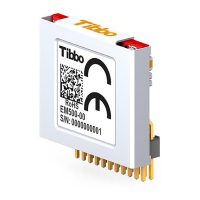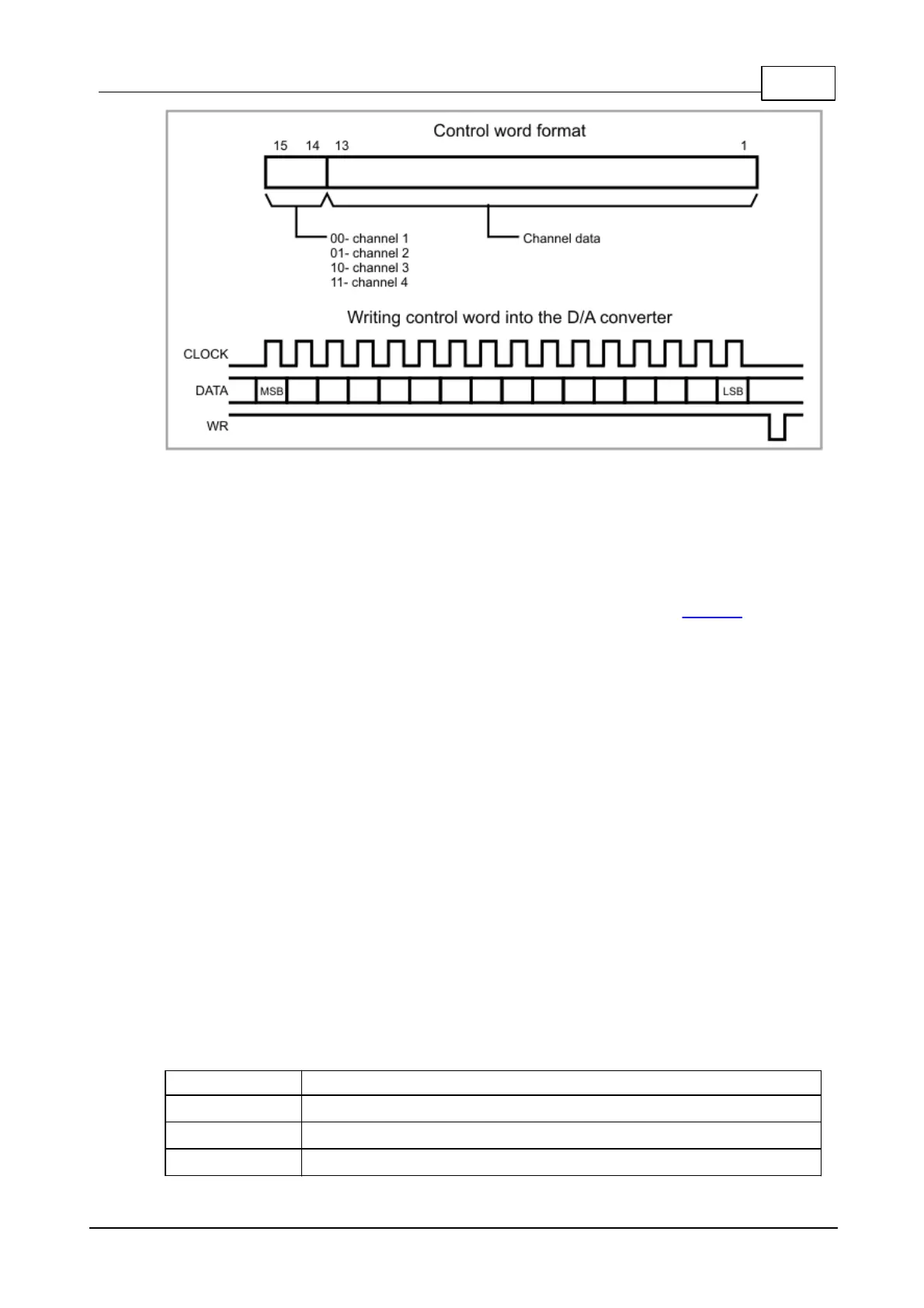174Boards
© Tibbo Technology Inc.
The EN line is used for enabling the analog outputs of the D/A converter. The
system powers up with EN line pulled HIGH internally. This disables the D/A
converter and produces 0V (0mA) on its outputs. Taking the EN line LOW will enable
the D/A. Before that, your application should write the desired value into each D/A
channel. Failure to do so will result in the unknown voltage (current) output levels
once the EN line is set LOW.
Remember that you need to configured all four control lines of the EM1000 as
outputs.
Clock speed limitations
The D/A converter is electrically isolated from the rest of the device, so there are
opto-couplers on all interface lines. Opto-couplers are relatively slow devices. This
imposes a limit on how fast the clock line can be toggled. The minimum clock period
is 200us. Both half-periods must be at least 100uS long. The minimum pulse width
on the WR line is also 100uS. This means that the new value can be output to the
converter in 200uS*16+100=3.3ms.
Relays
The IB1004 + SB1004 has two low-power mechanical relays.
These relays can only handle relatively light loads -- they are rated for 24V/1A. If
your load is inductive in nature, then the power the relays can handle may actually
be several times lower.
Relay outputs
Relay outputs are on terminal block #4. Both normally closed and normally opened
lines are provided for each relay.
Relay 2, normally opened line
Relay 2, normally closed line

